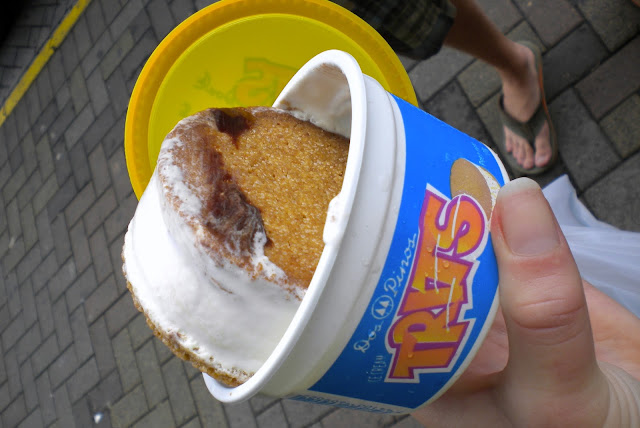"Step through new doors. The majority of the time there's something fantastic on the other side." — Oprah Winfrey
A big part of breaking out of your routine and experiencing someplace new is exploring the local cuisine. Every meal we had in Costa Rica was amazing...the food was mostly simple but very favorable and extremely good. Here are some of the local favorites in Costa Rica. We didn't try all of them, but we did enjoy quite a few, plus a few other delicious dishes.
Rondon - Composed of whatever the cook can “run down,” rondon dates back to earlier times of subsistence diets in the Caribbean. It’s fundamentally a coconut soup, made with fish along with a variety of tubers like sweet potatoes and yucca. Hands down a favorite Costa Rican dish.

Naturales - Wherever you are in Costa Rica, you’ll see stand alone kiosks dedicated to juicing tropical fruits. Climb on a stool - if you can find an empty one and take your pick. Mango, pineapple, blackberry, melon, and banana are the usual favorites.
Cacao Fresco - When cacao pods ripen, they look like little yellow footballs. Crack them open and you can eat the tender white flesh covering the cacao beans. The fruit’s sweet and tangy taste will give you a whole new outlook on what you thought chocolate was.
Picadillo - A typical Costa Rican side dish made of diced vegetables that are parboiled and then fried with onions, carrots, garlic, and sometimes a little ground meat.
Arroz Con Pollo - Rice and chicken, mixed with vegetables normally accompanied with salad and fries. It's kind of like a Latino fried rice. You can find it in most Central American countries.
Patacones - These are smashed and fried plantains, used a lot like a tortilla chip. Used for dipping or topping like a nacho. In other countries such as Nicaragua, these are called tostones.
Chorreadas - These are Costa Rican corn pancakes that are eaten as a snack, breakfast or appetizer. They are delicious when paired with coffee because they are normally made sweet.
Ceviche Tico - this dish is clean, light and refreshing. Fish (typically sea bass) cut into tiny cubes, mixed with diced red onion, cilantro, and red pepper, then marinated in citrus juice. The dish is served with soda crackers or fried plantains.
Gallo Pinto – This is the Costa Rican take on rice and beans. Served up with a few dashes of Salsa Lizano, the national sauce that’s tangy and smoky with a hint of cumin. It is usually served with breakfast.
Rice ‘n’ Beans - Wait, didn’t we just cover this? NO! The difference represents Costa Rica’s cultural diversity within its own borders. This dish is set apart from gallo pinto because it incorporates coconut milk, red beans, thyme, and spicy Panamanian chilies.
Chifrijo - is a popular layered dish of rice topped with black beans, twice-fried pork bits and pico de gallo. Served with fresh tortilla or plantain chips. It's a popular appetizer at bars.
Granizados - This is a cold treat of shaved ice and layered with powdered milk, condensed milk, and any flavored syrup that tickles your fancy. Popular at the beach.
Trits - Ice cream sandwiches made with a generous portion of vanilla ice cream swirled with fudge ripple and nestled between two cookies that tastes somewhere between a sugar cookie and a graham cracker. It is a wonderful treat.
Casado - Translated casado means “married.” This dish is found in nearly any soda (small diner serving typical Costa Rican dishes), casado is the fixed pairing of white rice, black beans, a vegetable side and a protein…like fish, chicken beef or pork. It’s Costa Rica's version of the blue plate special.
Agua de Sapo - Translated it means “toad water” it’s a refreshing twist on lemonade made with brown sugar and ginger. I never saw this anywhere, but I think I would love it.
Coffee - Costa Rican coffee beans rank as some of the best in the world. The rich volcanic soil at high altitude lends them their characteristic silky body, and the taste of the beans ranges from crisp fruitiness to smoky chocolate. Every cup we had was wonderful and we brought home 2-3 pounds to enjoy. We probably should have gotten more.





















